We evolved with the same dance form, same philosophy and so we have always been comfortable with each other. We share so many similarities that, unlike marital couples who often have contrasting views over many issues, we have hardly quarrelled
− Shanta
Sometime in early 2016, the Airtel Girl, Sasha Chettri, created a splash with her fresh, innocent looks in the smart Airtel advertisements. Just when you thought no other mobile company could steal the ad thunder from Airtel, Vodafone literally walked off with the smiles by launching the Dhananjayans-Shanta and VP, the renowned classical dancing couple of Chennai and Padma Bhushan awardees-as models for their extremely creative ads for the SuperNet 4G. These ads, brought in early this year, brought smiles on the lips of millions of television audiences. Corporate Citizen spoke to the dynamic septuagenarian couple who are fighting fit, endlessly energetic and enthusiastic, who greet surprises as positive challenges and have a childlike disposition towards life, to be enjoyed every moment

In one of the tranquil residential areas of Adyar in Chennai, stands a bungalow featuring typical Kerala architecture. It is a famous landmark as it houses 'Bharata Kalanjali', the renowned Bharatnatyam dance academy, run by Shanta and VP Dhananjayan, both of who are recipients of the prestigious Padma Bhushan awards, and are internationally acclaimed in the world of performing arts. While until recently, their fame was confined to the magnificent world of classical dance; overnight they have become famous as models for Vodafone’s SuperNet 4G. The duo make a striking pair as models in several variants of the advertisement, shot in Goa. They continue to receive rave reviews and congratulatory messages for the ease and finesse with which they performed before the camera, which they say was all about running from one real life scene to another, rather than some stiff posing before the camera in a studio, as they had expected.
As I approach the bungalow, VP Dhananjayan is already outside the gate, ready to receive me with a namaste, clad in his traditional attire of dhoti, kurta and angavastram slung around his neck. His gentlemanly and humble disposition is amazing-no pride or arrogance of this sudden advertising fame or his long standing success as a classical dancer. As we entered inside, Shanta, his wife, greeted me with warmth and childlike enthusiasm. Both are so people-friendly and ready to narrate their tryst with modelling that it has made them favourite subjects for print, radio and television interviews.
States Shanta, with a glint in her eyes, “It happened early this year. You won’t believe it, one Sunday, we were having breakfast with our son Satyajit, when suddenly he got a call. It was one of his friends. He asked him whether we would be interested in doing a small ad for Vodafone. He, in turn, asked us and we both looked at each other and said okay, why not. And that’s it - by 3 pm on the same day, the Casting Director arrived from Mumbai, clicked our photographs and took some video shoots. She then took some of the photographs and video clippings on a CD to send it to the film company located in Bengaluru. They, in turn, promptly called us to tell us that they had booked our tickets to Goa the very next day.” Says VP, “We were selected because they were not on the lookout for actors-they wanted a real life, elderly couple.”
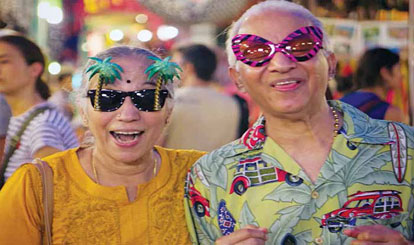
They immediately flew to Goa, anticipating a studio, where they expected to model as per the instructions of the Art Director. But, lo and behold, they were made to go all over Goa to shoot on outdoor locales, including the Chapora Fort made famous by the Bollywood super successful movie, 'Dil Chahta Hai'. Says Shanta, “We had to visit Goa twice, and shoot for ten days in all. It was a totally different experience for us-we had no clue what the shoots would be, so we were highly charged. They were packed with elements of surprise too. For example, for the shooting of the scene where we had to go to the Chapora Fort, VP was asked to ride a scooter and take me pillion on it. If you have seen the ad, it begins with us asking one of the shopkeepers to guide us how to go there. But VP does not know how to drive the scooter…” Elaborates VP, “They arranged for a trainer who would teach me how to ride it in a day’s time. However, I was not too confident, although I seemed to get the hang of it. So, they actually spotted a guy who resembled me-who was part of a crowd for an earlier shoot of the train scene where we were alighting on the platform. He was part of the crowd gathered there who had come to see his wife off. It is amazing how perfectly they shot the scene with my look-alike. Modelling for advertisements is like being in a different world. I had modelled for Nerolac Paints a decade ago, but at that time, it was just a static kind of modelling. Now, they make it look like real life experience.”
" We always keep creating; every day is new for us, so everything that we obtain is adventure for us. Both of us are in the same field; there is a lot of give and take between us, so we understand each other. There is no disparity in our ideas
− VP
They have suddenly become busy giving interviews and getting calls from their friends!

With a tagline #MakeMostOfNow, it revolves around the Second Honeymoon of an elderly couple, making the point that these days mobile internet is being used by different age groups, including seniors. And that, with Vodafone’s SuperNet 4G, the user need not be worried about usage and network. In an interview to Adage India, Siddharth Banerjee-Executive Vice President, Marketing, Vodafone India, has stated, “Our research and consumer insights indicate that mobile internet is increasingly being used by customers across different age groups for multiple applications like live streaming, maps, movie download, group video calls, etc. Vodafone continues to invest in building Vodafone SuperNet 4G – The Data Strong Network, to provide a fast and consistent mobile internet experience for our customers. Our latest campaign captures moments from the life of an old couple who are young at heart and out on a trip to MAKE THE MOST OF NOW with the Data Strong Network.”
VP is 78 and Shanta is 73 years old. What is the secret of their unending energy and fitness? Says Shanta, “See, it is all because of Naatya. Couples like us have been through dancing since childhood and that is the best way to keep fit, besides contributing to our rich, cultural heritage.” Adds VP, “We always keep creating; every day is new for us, so everything that we obtain is adventure for us. Both of us are in the same field; there is a lot of give and take between us, so we understand each other. There is no disparity in our ideas. We don’t dispute on most of the issues-we have the same kind of taste and attitude. That’s why our life has been so happy and has kept us in good spirit, always. No negativism overpowers us; we always think positive and advise people to think positive.’’
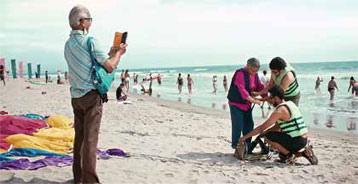
A Politics and Economics graduate, VP Dhananjayan arrived from his village in Kerala to Kalakshetra in 1953 as a young boy. He received training in Bharatanatyam and Kathakali simultaneously, which he performed with equal proficiency. He was also given a scholarship to study at Kalakshetra where the rigours of his education and way of life prepared him to meet the challenges of life. Initially, his dance training and education in Kalakshetra was the only contact with the outside world. Much of his inspiration, dedication and attitude to life were fashioned here.
Shanta Dhananjayan holds a Post Graduate Diploma with distinction in Bharatanatyam and has also learnt Kathakali and Carnatic music from Kalakshetra. She was the leading female dancer for Kalakshetra from 1955 till 1968. Though Shanta was born in an affluent family in Malaysia, she traces her ancestry to Kerala from where her family had migrated to Malaysia three generations ago. She joined Kalakshetra as an eight year old in June 1952, a year before Dhananjayan did.
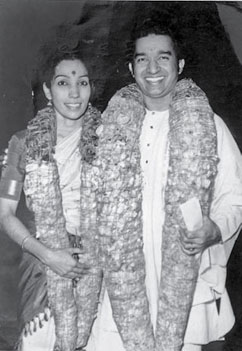
Says Shanta, “Both of our upbringing has been at Rukmini Devi Arundale's Kalakshetra, where we literally grew up, watched together and studied together. So we evolved with the same dance form, same philosophy and so we have always been comfortable with each other. We share so many similarities that, unlike marital couples who often have contrasting views over many issues, we have hardly quarrelled.’’
VP: I joined Kalakshetra in 1953 and Shanta was already there since 1952. Once, my Ashram Guru called Shanta and told her that she is the only one who knows Malayalam and so she should speak to me and guide me. That was our first meeting. Thereafter, she was chosen to play Sita and I, Rama, for the Valmiki Ramayana dance drama and that got us closer during the rehearsals and performances of this show, outside Kalakshetra.
Says VP, “We can’t pinpoint, but we developed a liking for each other. I expressed my love one day but she was frightened to reciprocate. She was afraid of what the teachers would say and besides, she was extremely serious about her work. Propelled by my friends, I would pick up courage to time and again express my feelings for her, but she would just run away when she saw us coming. But in the dance class we were free with each other, and she hinted that she was interested in me by the way she spoke to me. However, she wanted it to be such a secret that she used to shudder even during the enactment of Valmiki Ramayana, when we, as Rama and Sita had to hold hands during the marriage scene.
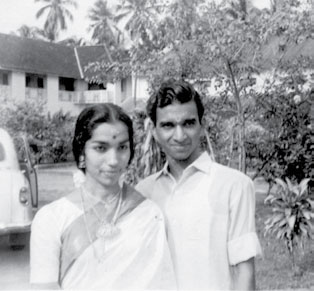
Adding further, he says, “In those days, a love affair was taboo, so she didn’t explicitly express her love for me even when it was time for her to go back to Malaysia after graduation. So all my friends thought it was the end of our love affair. However, three years later when her mother decided to search for a groom for her she broke down. Her mother understood her and asked her whether she was thinking about me. She burst into tears and confessed. Her mother warned her that I came from a humble background so would she be able to cope. But if she was in love with me and firm about marrying, she would be happy getting her married to me. At the same time Rukmini Devi asked her not to waste her talent by residing in Malaysia, so she returned to Kalakshetra. Soon, we had a long tour to Australia in 1966 for the Valmiki Ramayana play which brought us together for four months. We came back from Australia and soon got married. We had a small marriage, all expenses borne by my in-laws. I had to borrow RS. 500 from my friend in Kalakshetra for a small reception.’’
Two years later, in 1968, VP Dhananjayan left Kalakshetra to found the Bharata Kalanjali dance academy. Shanta continued at Kalakshetra and joined him in 1970. Ever since, they have worked relentlessly to make it a renowned academy, honing the dancing skills of hundreds youngsters, making professional dancers of many of them.
"My grandmother always taught us to be respectful of women. She used to always ask us to respect and be protective of our sisters. Our teachers too would teach us to respect girls and protect them. These days, there is so much sexual abuse and assault happening because our education system has gone wrong
− VP
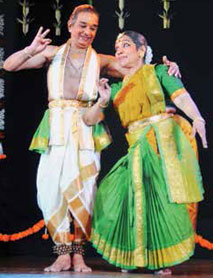
VP: Firstly, one must consider marriage as a very important and divine institution. This in itself will set your attitude towards marriage-that it has to be carefully nurtured. For this, the attitude of give and take is very important between the couple. You should have an open mind to accept each other’s good and bad things. As for us, we have understood each other perfectly and only think positively about each other. Professionally too, we have no clashes. I think it is God’s grace that we think alike always.
Shanta: For me, growing up in Kalakshetra and having this connect with him was very lucky. In those days, I was afraid to show my love and used to hide my feelings. It was a difficult period, as somewhere in my heart I knew he was the right person for me, but I had to keep it close to my chest. As a result, I have given him some trying times. I didn’t want to give him too much hope, although I knew I would get support from my parents. I was mature enough to be careful, as I knew that if I was firm, my parents would surely support me.
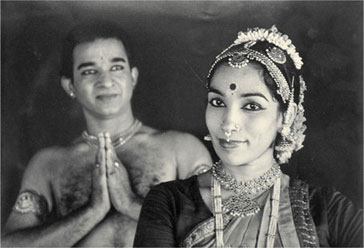
Shanta: Firstly, he is an artist, par excellence. For me, he is top notch. Secondly, he is very straight forward, sometimes even to the point of being extremely curt. He may seem rude, but I know he doesn’t mean to be so. He takes quick decisions while I like to mull over them. And of course, he is a handsome man and I am proud of that.
VP: I always had in mind that a good wife should have the five qualities that are mentioned in one of the Sanskrit shloka from Subhaashitam (good talks) or Neethisaaram: essence of righteousness : kaaryeshu manthri (efficient like a minister), karaneshu daasi (work in the spirit of service), rupeshu Lakshmi (beautiful like Mahalakshmi), kshamyaa dharitri (Mother earth like patience), sneheshumaataa (affectionate like mother), sayaneshu vaishyaa (the ideal wife), shatkarma naari kula dharmapathni (these are six attributes of good house wife).’’ This is what I learnt as a child and she has fulfilled each and every of this criteria. Since the Kalakshetra days, I found her very intelligent, beautiful and talented in dancing. My grandmother always taught us to be respectful of women. She used to always ask us to respect and be protective of our sisters. Our teachers too would teach us to respect girls and protect them. These days, there is so much sexual abuse and assault happening because our education system has gone wrong. Unless we bring moral studies in the education system, atrocities against women will not stop.

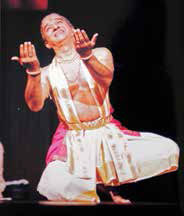
VP: There is lot of commercialism in the world of art in terms of artists trying to promote their own personality instead of promoting our rich cultural heritage. Our art and culture is based on Sanatan Dharma, which means, you have to live a good family life. You should live by the philosophy of Vasudaiva Kutumbakam, implying that you must think of everyone as a part of your family and love all people. Instead, people in the world of art, have become money-minded. Today, sitting on the seat of power, politicians don’t know the value of art and culture. Unfortunately, even in our Constitution, art and culture have no priority. It is in the last list, in fact, exactly 64th in the priority list. Our ancient kings had art and culture as the first priority. That is why they left so much through monuments, literature and art. It is because of this art and cultural heritage they left behind that our country is respected by international scholars and tourists; not because of the industry or the minds that we have. This is not realised by the corporate houses, the CEOs-they rarely understand the value of classical dance heritage so neither they nor the government encourage art and culture. Art is projected superficially for VIPs during some events. The government has not been able to maintain most monuments of our country. We have so much, but do they keep it clean? Do they look at it in the right spirit of joy and pride? No.
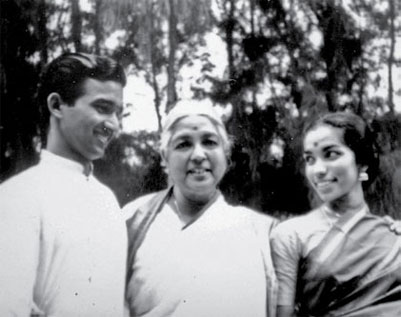
Shanta: Parents and teachers are both pushing the child-they are in a hurry to put up the child on the stage and make it a huge event. We tell the parents at the outset, please don’t talk about when the child will perform on stage. He or she is here to learn an art form and by that, he will learn everything from physical fitness to mental awareness and finally to become a good human being. When they come here, we insist upon discipline, devotion and dedication. We call it the 3D
VP: Even in our Kalanjali, we talk about Swachh Bharat-keeping everything clean. Our body has to be clean, our environment has to be clean always, and then only can we think clean. That is what Naatya does to the students. It cleans your mind, body and spirit, and enhances spirituality. Spirituality takes you to a higher level of thinking. That is what is taught in Naatya and Nrutya. Today, children are more influenced by the film world. Here, we teach them to be traditional, which includes dressing up decently and even wearing a bindi. Traditionally, the bindi is meant to be medication for the brain and the body because it was made up of turmeric and lime, which are disinfectants. The area where the bindi is put is the most vital area of our brain. Not only for Indians, but the practice of wearing the bindi is prevalent all through South East Asian countries. Whether it is the 3000 year old Chinese statue of kings and queens or the statues in Cambodia-they all wear bindis.
"Our ancient kings had art and culture as the first priority. That is why they left so much through monuments, literature and art. It is because of this art and cultural heritage they left behind that our country is respected by international scholars and tourists; not because of the industry or the minds that we have
− VP

VP: Our children learnt by example. They saw what we taught our students, of which they were also a part. Our house and our dancing institution are on the same premises, so our children have watched the way we treat everyone equally and so they have imbibed the same spirit of equality and respect towards all. Artistically, they have been growing under the influence of Naatya and Nritya and hence it has been a good upbringing. Both our sons are artistically inclined. We have no problem with our children, they have been brought up very well, and both are artistically inclined.
Our elder son, Sanjay is an Electronics Engineer with distinction and has an MS degree in CIM programme from the Rochester Institute of Technology, RIT Rochester, NY with distinction. He is a sensitive musician, both in Carnatic vocal and Mridangam. Sanjay, along with a few African and American drummers and musicians, has an ensemble group in Indianapolis, US, giving regular performances, outside his Management career in Computer Technology.
Our younger son, Satyajit is a dancer par excellence and also plays the violin and tabla. He has combined all these in his visual communication career as a photographer. Satyajit has opted to be a professional photographer. His advertising photography for different commercial products are already making a mark in the field, as did his performances in the dance and music field.
Shanta: Our sons also have good human values and we are very happy that they have something of art and beautiful culture in them. They have not forgotten the values inculcated in them during childhood.
VP: As compared to our days, children these days have too much curriculum in school that is unnecessary for them. Unfortunately, they don’t have much time to pursue their passions. Often, they are packed with extracurricular activities that their parents want them to pursue and not what they would like to do. There is too much of parental and peer pressure. If somebody is doing something, parents feel, my child also should do that. We never thrust that on our children. We would like our grandson to learn dance but he likes horse riding and we are all encouraging him in his pursuit.
Shanta: Children these days are very disturbed, and we keep telling them, if you do well in whatever you are pursuing, you will have better recognition and you will be the recipient of many other achievements. You need not be a professional dancer or a music professional but when you learn these art forms, it will reflect in whatever profession you have chosen.
VP: Absolutely, art integrated education is the solution for all the atrocities happening in the country. Our education system should be revamped and reinstated as in the olden days. There should be yoga, dance, music and painting classes as an important part of academic curriculum and any one of the art subjects should be made compulsory for the child.
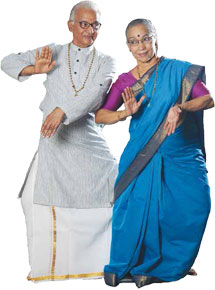
VP: Om Sahanavavatu, sahanaubhunaktu, Sahaviryamkaravavahai, Tejasvinavadhitamastu, Ma vidvisavahai. This is what our Upanishad says. Which means, eat together, work together, let us sharpen our intelligence together and have no enmity towards each other.
Shanta: Yes, this is the most beautiful part of the Upanishad and we try to inculcate it in all our children.
Shanta: At the end of the day, getting fulfilment is very important. And you must feel good in whatever you are doing.
VP: All the kids who are interested in art, all those who want to be artists, must pursue their goal and get encouragement from teachers and parents. Always think of the profession first; keep practising it relentlessly and passionately and do it well. Those who take up art as career, project the art and the art will project you. As for the rest of the youngsters, have devotion, dedication and discipline towards whatever you are doing, even if it is a small work. Have a positive attitude and listen to the elders.
Shanta: I agree with all what he has said, I think these days we need to be able to be patient and patience means you need to understand other people. And not jump to conclusions. Digest what they are trying to say and then give your opinion in a calm manner. Do not get into a heated conversation or be argumentative. There is a saying in Malayalam, ‘If you eat slowly, you can even eat a thorn’. Like that, the most difficult things in life can be taught or explained if you do it with a little more love and understanding. I think this is what we should inculcate in ourselves.
"All those who want to be artists must pursue their goal and get encouragement from teachers and parents. Always think of the profession first; keep practising it relentlessly and passionately and do it well. Those who take up art as career, project the art and the art will project you. As for the rest of the youngsters, have devotion, dedication and discipline towards whatever you are doing, even if it is small work
− VP
VP: Corporate houses, first of all, should understand the value of art and art integration in education; they should understand that art contributes to the development of any initiative. It should not be looked at for monetary benefit; this is often the case with government and corporate houses. They only see it as a performing and entertaining act. But connected to the art field, there are so many industries surviving, which are getting so much of business and also foreign exchange. For instance, if you take theatre, there are so many small things in theatre, starting from your makeup, costume, light and sound and so on-they are all contributing to the economy of the country, which our politicians and corporate houses don’t realise. According to my estimate and my statistics, these arts earn a sizeable amount of foreign exchange. So corporate houses should spend on art and culture and help artists who are leaving behind a legacy of art and culture, be it in the form of sculptures, paintings or performing arts. I am sculpting new sculptures to leave behind a legacy of new postures that have been developed over and above the ones we see in temples, like in Mahabalipuram, for example. However, this requires funding. We should have state-of-the-art monumental theatres, which will encourage artists and leave a legacy of art and culture behind for future generations.
By Vinita Deshmukh